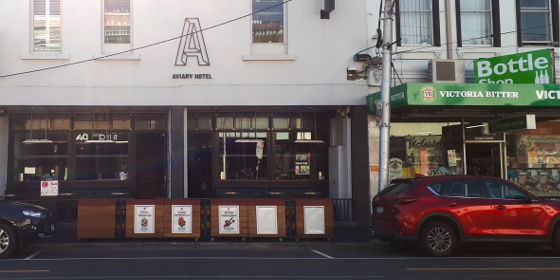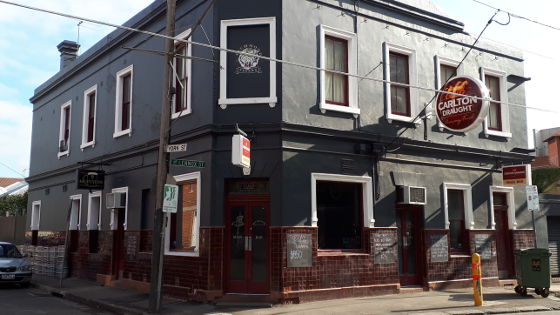
The establishment of Supervised Injecting Facilities can be vigorously opposed by people who have no objection to the use of alcohol, tobacco or caffeine.
MEDICALLY SUPERVISED INJECTING FACILITIES
The purpose of the following is to provide the truth for those with an interest in or concern about Medically Supervised Injecting Facilities. The example of the service in Richmond, an inner-city suburb in Melbourne, Australia is used. The concepts and principles are universally applicable to other locations.
The term 'opioid' refers to natural or synthetic substances that activate opioid receptors in the central nervous system. Morphine is the fundamental opioid sought by those who use opioids 'recreationally'.
HEROIN
Heroin is predominately the substance that is used in these facilities. No other drug is subject to lies and misinformation to the degree that heroin is. It is portrayed as a drug that can stop breathing due to a simple overdose, hence the need for these services. This however, is not true:
 Firstly, heroin is not a dangerous drug. It is merely a delivery system for morphine.
Morphine causes nausea and constipation.
Firstly, heroin is not a dangerous drug. It is merely a delivery system for morphine.
Morphine causes nausea and constipation.
 Secondly, fatal 'heroin overdose' is a fallacy. The danger is combinations of central
nervous system depressant drugs. This is when people mix opioids with alcohol, benzodiazepines, anti-depressants or anti-histamines etc.
Secondly, fatal 'heroin overdose' is a fallacy. The danger is combinations of central
nervous system depressant drugs. This is when people mix opioids with alcohol, benzodiazepines, anti-depressants or anti-histamines etc.
The chain of events that can lead to injury or death due to mixing drugs is heavy sedation, airway obstruction and asphyxiation. Breathing can be impaired or may stop altogether due to a restriction in the airway caused by posture or vomit.
Dangerous sedation can occur due to combinations of drugs that do not include opioids and does not involve a loss of the autonomic breathing reflex. Multiple-drug toxicity is explained in detail in the Overdose page.
The people used as examples during campaigning for the establishment of the facility in Richmond died due to the effects of combining drugs. They did not succumb to 'heroin overdose'.
There is no evidential basis for the concept of fatal 'heroin overdose'. There is only evidence that it does not occur. This evidence is detailed in the Heroin page.
NOT AS PORTRAYED
Supervised injecting facilities do not 'save' people from 'heroin overdose'. They can assist people who have combined drugs and are in danger of asphyxiation due to airway obstruction brought about by heavy sedation.
The facilities are incorrectly and mischievously portrayed as existing and being necessary to prevent people succumbing to 'heroin overdose'. They are deceptively portrayed as a compassionate response to the plight of a minority that is in actual fact, the subject of persistent and aggressive oppression.
The facilities are not necessary for the safe use of opioids. Opioids can be used safely if combinations of central nervous system depressant drugs that lead to dangerous sedation are avoided.
The facilities do not address in any way, the fundamental inequities, founded in law, that profoundly affect opioid users: the criminalisation of supply and possession.
The 'illegality' of heroin
Our 'drug' laws are completely unrelated to preventing and reducing drug-related harm, as supply and use of the two most dangerous drugs, alcohol and tobacco (and caffeine) is not addressed.
The purpose of our 'drug' laws is the intentional creation of crime. The crime is created by criminalising people as defined by an association with a drug other than alcohol, tobacco or caffeine.
Political advantage comes from the money created by the black market in drugs other than alcohol, tobacco and caffeine and the public money distributed to address the contrived crime.
Heroin is not 'illegal' on the grounds of health and welfare. There are two overarching reasons why it is 'illegal':
 To force its users to obtain it from and therefore sustain, a highly profitable black
market
To force its users to obtain it from and therefore sustain, a highly profitable black
market
 To enable the distribution of public money to enforcement agencies and others using
the false justification of 'controlling' its supply and punishing and 'treating' its users
To enable the distribution of public money to enforcement agencies and others using
the false justification of 'controlling' its supply and punishing and 'treating' its users
The criminal nature of heroin supply and possession is related solely to the attainment of political advantage brought about by the acquisition of money from the black market in opioids and the distribution of public money by governments.
OPIOID USERS
The use of opioids is no different in principle to the use of alcohol, tobacco or caffeine. It is simply the use of a substance for its psychoactive effects. Opioid users simply have a preference for morphine, the same way others might have a preference for alcohol. Opioid users are criminalised for doing something that is no different to that done by the majority in society: the use of a drug of choice.
The supply and possession of opioids outside the medical realm is a criminal offence. This situation is not related in any way to the effects of opioids on health: it is solely the intentional creation of crime from which many people benefit financially.
Consequently, users must obtain their drug of choice from a black market. This makes it virtually impossible for them to lead a normal life, as their lives revolve around securing a supply of the substance from an unreliable source, and often in a different location to where they live.
This situation is not their choice or of their making: it is imposed upon them by governments because it delivers political advantage through the acquisition of money. Users of alcohol, tobacco and caffeine would not accept the supply and possession of their drugs of choice being a criminal act.
Opioid users are denied two things, the same things that users of alcohol, tobacco and caffeine expect and take for granted:
 The right to legally possess their drug of choice
The right to legally possess their drug of choice
 The right to a legal and regulated supply of their drug of choice
The right to a legal and regulated supply of their drug of choice
The reason it is politically possible to criminalise the supply and possession of opioids is because only a very small proportion of the population use them. A small number of oppressed people have no political power. It is therefore politically achievable to impose upon them conditions which would not be imposed on the users of alcohol, tobacco or caffeine.
WHY RICHMOND?
Opioid users from elsewhere are coming to Richmond primarily because this is where they can obtain their drug of choice. They would prefer to have a legal and regulated supply of their drug in the area in which they reside: the same circumstance that users of alcohol, tobacco and caffeine expect as a basic right.
There is obviously a vibrant black-market supply of opioids in the Richmond area. It exists solely because the government criminalises the supply of 'recreational' opioids. The black market in opioids is intentionally created and maintained by governments.
The often quoted 'honey pot' effect is created purely by the illegality of supply. Until opioid users have the right to a legal and regulated supply of their drug of choice, they will go to where they can most reliably obtain it from the black market. Consequently, supervised injecting facilities will be established in the same area as the black-market supply of opioids.
DRUGS IN RICHMOND
The most dangerous drugs in Richmond are the same two drugs that are used almost universally world-wide: alcohol and tobacco. The residents of Richmond that use alcohol, tobacco and caffeine, expect to do so without fear of persecution.

Hotel directly opposite West Richmond Primary School and the Supervised Injecting Facility
Residents take for granted, and expect the right to purchase their drug of choice close to their places of residence and to not be criminalised for an association with the particular substance. The two most dangerous drugs in existence, alcohol and tobacco, are sold and (in the case of alcohol) promoted openly in Richmond.
THE REAL ISSUE
The 'heroin problem' is a situation that is intentionally created. Opioid supply and use is criminalised so as to intentionally create crime such as the black market in opioids. The situation is created and maintained by governments because it means a lot of money to a lot of people. The 'problem' can be instantly solved by two actions:
 The legalisation of heroin possession
The legalisation of heroin possession
 The legalisation of heroin supply
The legalisation of heroin supply
The intentional creation of crime by criminalising associations with a drug of choice is simply oppressive exploitation and therefore a blatant human-rights abuse.
Medically supervised injecting facilities can be valuable to people who intentionally or inadvertently mix drugs, but they are not a solution in any way to the basic issue: the criminalisation, oppression and exploitation of a minority.
CONCLUSION
As long as opioid users are denied the right to a legal and regulated supply of their drug of choice, there will be a situation of them coming to a place where they can obtain their drug. As long as supply and possession of recreational opioids is an illegal act, opioid users will be forced to endure a chaotic lifestyle.
The two conditions imposed on opioid users, illegality of supply and possession, exist solely to enable the facilitation of political advantage through financial gain and are not imposed on the users of alcohol, tobacco or caffeine. It is purely oppression and exploitation of a minority, based on a double standard.
Opioid users know nothing but hostility and bullying from government, police and society in general. This treatment is not justified, should not be happening and the solution is simple: an end to the oppression.
Medically supervised injecting facilities are mischievously portrayed as a compassionate health-based response by governments, when the primary issue is the mistreatment and exploitation of a minority by these same governments, based on the intentional creation of crime.
Honesty and decency towards fellow human-beings is all that is required for an end to the persistent oppression of opioid users. Only an end to the criminalisation of a minority in the name of political advantage and financial gain will deliver a true solution and a civil society in regards to opioid use.
